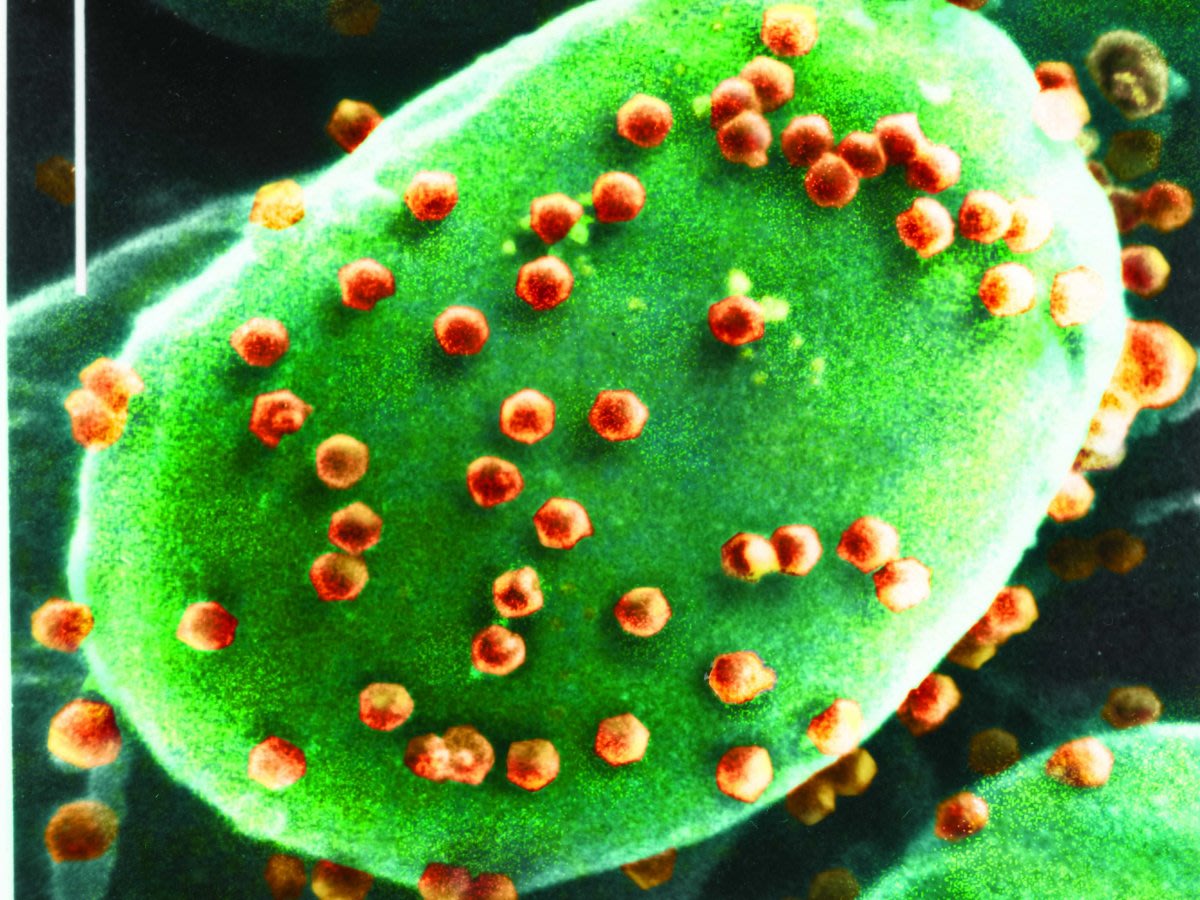A virus was living in the
mouths and throats of a good portion of the people in the study, a virus
that the researchers didn't think was capable of infecting humans.
Worse still, it seemed to be slowing some of the subjects' mental
abilities, especially their ability to process visual information.
The surprising part about this
for researchers was that a microscopic organism that we thought could
infect only algae — plants — was living in about 40% of the small number
of people tested.
For the rest of us, the bigger
surprise may be that this virus could join the ranks of microorganisms
that live inside and on us, changing the way we think.
In a way, this is less crazy than
it seems. Microscopic organisms live all over people and have all kinds
of effects on our health, brain, and behavior.
There are far more microorganisms
in and on a "person" than there are "human cells." Along with a few
pounds of bacteria — trillions of microbes — an even larger number of viruses
live in and on the human body. And we know that some of these other
creatures may change the way we think, feel, and even the way we
interact with others.
"We're really just starting to
find out what some of these agents that we're carrying around might
actually do," study co-author Dr. Robert Yolken, a professor at The
Johns Hopkins University School of Medicine, told Healthline.
A similar sort of algae-infecting virus. Here's What Scientists Discovered
 During the original study, published Oct. 27 in Proceedings of the National Academy of Sciences,
the researchers were testing 33 healthy people (a very small number) on
a variety of different measures, some of which were mental tests.
During the original study, published Oct. 27 in Proceedings of the National Academy of Sciences,
the researchers were testing 33 healthy people (a very small number) on
a variety of different measures, some of which were mental tests.
 Six weeks later, the group of mice with ATCV-1 took about 10% longer to navigate a maze, and they also spent about 20% less time exploring new environments.
Six weeks later, the group of mice with ATCV-1 took about 10% longer to navigate a maze, and they also spent about 20% less time exploring new environments.
A similar sort of algae-infecting virus. Here's What Scientists Discovered
But they also swabbed the throats
of the participants and did a genetic analysis of what was there. In 14
of the 33 people, they found genes from a virus that until now had
never been found in living people (researchers had found it once before
in someone's brain during an autopsy, but they didn't know if it had
been there when the person was alive).
The virus itself is called ATCV-1 and it's a chlorovirus, a family of viruses that infect plants.
This one affects algae — that green stuff that grows on water — in
lakes all over the world. But as far as researchers knew before this,
viruses like this very rarely cross from one kingdom like plants to
another, such as animals. And even when they do, it's more likely that
they'd go from plants to some type of invertebrate, not all the way to a
complex animal like a human.
Here's the most interesting part
(for most of us): Since the original study included cognitive tests, the
scientists compared the data and saw that people with the virus living
in their throats processed visual information about 10% slower than
people without the virus — and this difference couldn't be explained by
other factors like age, sex, race, socioeconomic status, education,
place of birth, or smoking status.
The specific visual information
tests where a difference was shown included things like drawing a line
that connected numbers in sequence that had been scattered on a page.
People with the virus also seemed to have a shorter attention span.
To check if this group was
somehow different from the general population, the team checked another
59 people for the virus. Out of the final 92, it was present in 40,
about the same rate as in the initial, smaller group.
To investigate whether the virus
might be the cause of that change in visual processing and attention,
the researchers then injected mice with the same virus.
The infected mice also
showed more than 1,000 gene changes in the parts of the brain that are
usually considered essential for memory and learning. The researchers
could observe these gene changes in mice because they analyzed the mice
before and after they were infected with the virus. This shows some of
the effects the virus could have on people, but since mice aren't humans
we don't know that humans would show the same changes — and it would be
unethical to conduct the same experiment on people.
Don't Go In The Water?
While this study presents some new and fascinating information, it isn't nearly comprehensive enough to say what it all means.
"The thing that's different about
what we found is that [the virus] is something that we wouldn't have
suspected would actually have any effect on humans or animals," Yolken
told Healthline.
The whole group of people tested
was from Baltimore, so we don't know how common this virus is in the
rest of the world — or even in the rest of Baltimore, as 92 people is
still a small number. And while the information from the mice is
interesting, there's no way to say that genes in human brains
necessarily change the same way.
And even then, this is a very
small effect — and just one of many brain and behavioral changes that
may be caused by the trillions of creatures that live in and on us.
Others that we know about make people more or less social, and may be connected to mental health issues like depression and anxiety, all of which cause cognitive changes.
Still, something microscopic that
we didn't even know existed in humans is changing the way some of us
think and see. That's pretty crazy.
"There's more and more studies
showing that microorganisms in your body have a bigger influence than
anything anyone would have predicted," the paper's senior author, James
Van Etten, a University of Nebraska-Lincoln plant pathologist, told
Healthline.

No comments:
Post a Comment